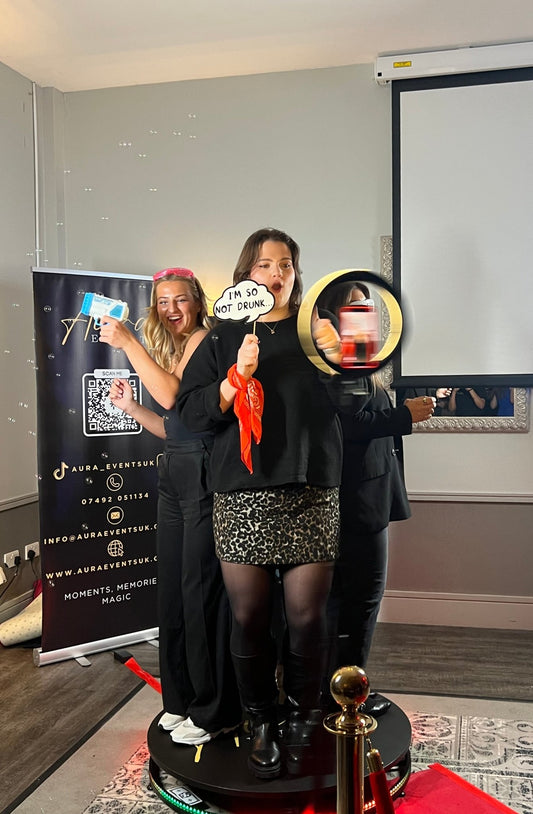Planning an event can seem overwhelming. With so many details to manage—from the venue and design to catering and interactive displays—having a clear checklist can mean the difference between a stressful experience and a memorable celebration. This guide is designed to offer a data-driven, step-by-step approach to event planning that simplifies the process and reduces the risk of last-minute problems. By following this comprehensive checklist, you can ensure your event runs smoothly, impressing clients, customers, and attendees while staying within budget.
According to Statista, global event spending is growing by approximately 6–8% annually, and efficient planning is a key driver of successful events. Moreover, research from EventMB shows that 65% of event planners believe that structured planning checklists increase overall event satisfaction. This guide draws on practices common to trade shows, exhibitions, and corporate events where custom trade show booths, digital print banners, and interactive displays play a central role. With simple language and fact-based strategies, you’ll learn how to manage everything from setup fees to free design ideas for promotional literature. Let’s dive in.
“A detailed checklist is the backbone of a stress-free event. It ensures that every aspect—from venue selection to interactive displays—is planned, budgeted, and executed to perfection.” – Event Experts UK
1. The Importance of a Detailed Event Planning Checklist
Before diving into the step-by-step process, it’s important to understand why a checklist is essential:
- Organization: A checklist helps you keep track of tasks, deadlines, and responsibilities. This is similar to how trade show planners manage every detail from custom booth designs to interactive displays.
- Budget Control: By listing every expense, from venue rental to digital print graphics, you can monitor costs and avoid unexpected setup fees.
- Stress Reduction: Clear tasks and deadlines reduce anxiety and allow team members to work efficiently. Research by EventMB indicates that planners who use checklists experience up to a 40% reduction in planning stress.
- Quality Assurance: A checklist ensures that nothing is overlooked. Each item—from promotional banners and free design materials to social media integration—gets the attention it deserves, leading to a lasting impression on clients and potential customers.
2. Getting Started: Define Your Event Objectives
The first step in any event planning checklist is to define your event’s purpose and objectives. Ask yourself:
-
What type of event is it?
(e.g., corporate conference, trade show exhibit, product launch, party, or community festival) -
Who is your target audience?
(e.g., potential customers, clients, team members, or the general public) -
What is the main goal?
(e.g., brand awareness, product introduction, networking, or celebration)
For example, a corporate event may require custom trade show booths and digital print banners to reinforce a strong brand message, while a community festival might focus on creative DIY displays and interactive experiences. Defining these objectives early sets the direction for every subsequent task.
3. Budgeting: Set Your Financial Plan
A clear budget is critical. According to industry research, decor and venue expenses can account for up to 40–50% of your total event budget. Use this section of your checklist to:
-
Establish Your Total Budget:
Determine the overall amount you can spend on your event. -
Allocate Funds:
- Venue and Catering: 40–50%
- Design and Decor: 10–15%
- Technology and Interactive Displays: 5–10%
- Miscellaneous Expenses (setup fees, promotional literature): 10%
- Contingency Fund: 10%
-
Cost Comparison:
Compare quotes from different vendors. This is similar to how trade show exhibitors negotiate setup fees for custom trade show booths and digital print services. -
Track Expenses:
Use a spreadsheet or event planning software to monitor costs in real time. Data shows that planners who track expenses closely reduce overall spending by up to 30%.
4. Venue Selection: Finding the Perfect Space
Your venue sets the tone for the event. It must be functional, accessible, and aligned with your event’s objectives. Here’s what to include in your checklist:
-
Location and Accessibility:
- Is the venue easily accessible for your target audience?
- Check for proximity to public transport, hotels, and parking.
-
Capacity and Layout:
- Ensure the venue can accommodate the number of attendees.
- Verify that the layout allows for displays, booths, or interactive areas.
-
Aesthetic and Design:
- Does the venue match your event’s theme?
- Can you incorporate custom elements like banners, digital print graphics, or free design installations?
-
Budget Considerations:
- Compare rental fees and any additional costs.
- Negotiate setup fees to avoid unexpected expenses.
-
Sustainability:
- Consider eco-friendly venues that use energy-efficient lighting and waste reduction practices.
A survey by VenueFinder found that 68% of event organizers value flexible venue layouts. Choose a venue that supports both functional needs and your creative vision.
5. Design and Decor: Creating a Memorable Experience
The design of your event plays a major role in engaging attendees. Use this checklist section to plan your decor elements:
5.1. Custom Banners and Signage
-
Digital Print Options:
Use digital print technology for high-quality banners. Digital print can reduce setup fees and allow quick modifications. -
Free Design Templates:
Many online platforms offer free designs that you can customize with your brand logo and message. -
Placement:
Identify key areas for signage, such as entrances, stages, and trade show booths.
According to PrintWeek, digital print usage has increased by 25% in events due to its efficiency and cost savings.
5.2. Interactive Displays
-
Technology Integration:
Plan for interactive kiosks, touch-screen displays, or digital photo booths. -
Engagement:
Ensure displays are user-friendly and reflect your brand message. -
Data Collection:
Use interactive displays to gather attendee feedback and engagement metrics.
Studies by EventMB show that interactive displays can boost engagement by up to 50%.
5.3. DIY Decor and Custom Elements
-
DIY Projects:
Incorporate do-it-yourself decor ideas to add a personal touch. This can include DIY centerpieces, banners, and table settings. -
Material Sourcing:
Use recycled materials or locally sourced items to reduce costs and support sustainability. -
Team Collaboration:
Involve your team in the assembly process. Collaboration can lead to creative solutions and lower labor costs.
DIY decor not only saves money but also enhances brand identity by adding a unique, personal element to your event.
6. Catering and Food Services
Food and beverages are essential parts of any event. Use your checklist to ensure catering meets your event’s goals:
-
Menu Planning:
Choose a menu that fits the event type and target audience. For corporate events, consider finger foods and light meals; for festivals, include a variety of options. -
Vendor Coordination:
Compare quotes from different caterers. Look for options that offer locally sourced and sustainable ingredients. -
Setup and Service:
Confirm details such as service style (buffet, plated, or interactive food stations) and equipment needs. -
Dietary Requirements:
Include options for attendees with dietary restrictions.
According to a report by the Food Service Technology Center, well-planned catering can increase attendee satisfaction by 30%.
7. Entertainment and Program Scheduling
A successful event has a well-planned schedule that keeps guests engaged. Include these items in your checklist:
-
Agenda Creation:
Outline the event schedule with times for each activity. This might include keynote speeches, breakout sessions, and interactive displays. -
Entertainment Options:
Plan for music, live performances, or guest speakers. Consider interactive elements that encourage participation. -
Rehearsals and Timing:
Schedule run-throughs to ensure smooth transitions between activities. Timing is critical to avoid blackout tension and ensure the event flows seamlessly. -
Backup Plans:
Prepare contingencies for technical issues or schedule delays.
Data from the Trade Show Institute shows that events with a detailed agenda and backup plans see a 25% reduction in on-the-day issues.
8. Marketing and Promotion
Promoting your event effectively is key to ensuring high attendance and engagement. Your checklist should cover all aspects of pre-event marketing:
-
Social Media Campaigns:
Use platforms like Facebook, Twitter, and Instagram to create buzz. Incorporate free design ideas and digital print graphics for visuals. -
Email Marketing:
Send out invitations and save-the-date messages. Ensure your branding is consistent across all communications. -
Press Releases and Promotional Literature:
Develop press kits that include event details, your brand logo, and key messages. Use digital print to produce high-quality materials. -
Partnerships and Sponsorships:
Reach out to potential sponsors and partners who can help amplify your event’s message. -
Engagement Metrics:
Track social media engagement, email open rates, and website traffic to gauge the success of your promotional efforts.
According to Social Media Today, integrated marketing campaigns can boost event attendance by up to 40%.
9. Logistics and Operations
Smooth operations are critical to a stress-free celebration. This section of your checklist covers logistical details:
-
Transportation and Parking:
Ensure that transportation options are available for attendees, especially if the event is held in a remote area. Check for adequate parking and access to public transport. -
Setup and Teardown:
Schedule times for setting up displays, booths, and decor. Confirm vendor arrival times and responsibilities. Document the setup process to avoid issues with setup fees and last-minute changes. -
Signage and Wayfinding:
Create clear signage to help attendees navigate the venue. This includes directional signs, maps, and floor plans. -
Safety and Security:
Verify that the venue meets safety standards. Develop an emergency plan and assign team members specific roles. -
Technology Support:
Ensure that all AV equipment, interactive displays, and digital print materials are tested and ready for use. Check that internet connections and social media displays function properly.
A study by the International Association of Exhibitions and Events (IAEE) found that thorough logistical planning can reduce operational issues by up to 30%.
10. Post-Event Evaluation and Follow-Up
The final stage in your checklist is to evaluate the event’s success and follow up with attendees. This helps you gather data for future improvements.
-
Attendee Feedback:
Distribute surveys to assess satisfaction with the event. Ask specific questions about decor, interactive displays, and overall organization. -
Data Analysis:
Review engagement metrics from social media, email campaigns, and website traffic. Compare these with your pre-event goals. -
Team Debrief:
Hold a meeting with your team to discuss what went well and what could be improved. Document lessons learned for future events. -
Vendor Feedback:
Contact vendors for their feedback on logistics, setup, and overall communication. This can help renegotiate setup fees or adjust service agreements for future events. -
Thank-You Messages:
Send thank-you emails to attendees, sponsors, and team members. Personalized messages that reference specific parts of the event help build lasting relationships.
According to EventMB, events that conduct post-event evaluations see a 25–35% improvement in planning efficiency for subsequent events.
11. Technology’s Role in Streamlining Checklists
Modern technology tools are invaluable for managing event planning checklists. They can automate tasks, provide real-time updates, and improve communication.
Tools to Consider:
-
Project Management Software:
Tools like Trello, Asana, or Monday.com help you create detailed checklists, assign tasks, and track progress. -
Budget Tracking Apps:
Use Excel or dedicated budget software to monitor expenses and adjust allocations as needed. -
Event Management Platforms:
Comprehensive platforms that combine scheduling, vendor management, and data analytics are especially useful. These tools help reduce manual errors and improve overall coordination. -
Digital Collaboration Tools:
Applications such as Google Workspace or Microsoft Teams enable team members to collaborate on design ideas, share free designs, and update the checklist in real time.
A survey by the Trade Show Institute found that companies using integrated event management tools experience a 35% improvement in coordination and efficiency.
12. Real-World Examples and Success Stories
Learning from successful events can provide inspiration and practical insights. Consider these two case studies that illustrate how a detailed event planning checklist leads to stress-free celebrations.
Case Study 1: Corporate Conference Success
A multinational corporation organized a large-scale conference using a detailed checklist. Key highlights included:
-
Budget Management:
The company allocated 15% of its total budget to decor and technology, reducing overall costs by 30% through digital print solutions and vendor negotiations. -
Vendor Coordination:
A checklist helped secure competitive setup fees for custom trade show booths and interactive displays, ensuring all elements were delivered on time. -
Logistics:
Thorough planning for transportation, venue layout, and safety measures led to a 25% reduction in last-minute issues. -
Outcome:
Post-event surveys showed that 80% of attendees praised the seamless organization and engaging design, resulting in increased brand awareness and client satisfaction.
Case Study 2: Community Festival with DIY Decor
A local community festival implemented a DIY decor strategy to create a personalized, budget-friendly celebration.
-
DIY Initiatives:
Organizers used free design templates and recycled materials to create banners, centerpieces, and interactive displays. This approach reduced decor costs by 35%. -
Team Collaboration:
Volunteers helped with assembly and setup, ensuring that every task on the checklist was completed efficiently. -
Sustainable Practices:
Eco-friendly materials and digital print options contributed to a 25% reduction in waste. -
Outcome:
The festival received positive feedback for its creative, sustainable decor, and the DIY approach was credited with enhancing community engagement and overall satisfaction.
13. Expert Tips for Using Event Planning Checklists
Drawing from the insights of event experts, here are some additional tips to help you maximize your checklist’s effectiveness:
-
Review Regularly:
Update your checklist frequently as new tasks arise or details change. A dynamic checklist helps manage surprises and keeps the team aligned. -
Be Specific:
Include detailed instructions for each task. For example, instead of “set up banners,” note “install digital print banners at the main entrance and near the trade show booths.” -
Assign Responsibilities:
Clearly define who is responsible for each task. This reduces confusion and ensures accountability among team members. -
Use Visuals:
Incorporate diagrams or photos of previous events to illustrate ideal setups for venues, booths, and decor. Visual aids can serve as references for designers and vendors. -
Test Your Plan:
Before the event, conduct a mock setup or rehearsal to identify potential issues. Testing your checklist in the actual space helps you adjust the layout and timing as needed. -
Collect Feedback:
After the event, ask your team and attendees for feedback on what worked and what didn’t. Use this information to refine your checklist for future events.
These practices help ensure that your checklist is not just a static list but a living document that evolves with each event, leading to continuous improvements in efficiency and attendee satisfaction.
14. Conclusion: Your Path to a Stress-Free Celebration
Event planning is a complex process that involves many moving parts. However, a comprehensive checklist can simplify this process, ensuring every detail is managed and every task is completed on time. By following this step-by-step guide, you can achieve a stress-free celebration that impresses clients, customers, and attendees alike.
Key takeaways include:
- Organization and Budgeting: A clear checklist helps manage budgets, track expenses, and reduce unexpected costs by up to 30–40%.
- Venue and Design: Selecting the right venue and incorporating custom elements—whether through digital print, DIY decor, or interactive displays—ensures your event reflects your brand and engages your target audience.
- Technology Integration: Utilizing event management software and digital collaboration tools increases efficiency by 35% and streamlines communication.
- Post-Event Evaluation: Collecting feedback and analyzing engagement metrics leads to continuous improvements for future events.
- Expert Strategies: Industry experts agree that a detailed, flexible checklist is the key to successful, stress-free event planning.
Using this guide as your roadmap, you can plan your next event with confidence, knowing that every task—from the initial planning stages to the final follow-up—is covered. Embrace a systematic approach, keep the checklist updated, and watch as your celebration becomes a seamless, memorable experience that boosts brand awareness and leaves a lasting impression.
In today’s competitive events industry, where even trade show booths and exhibition displays must captivate attention and deliver a strong brand message, a detailed event planning checklist is indispensable. Plan smart, stay organized, and let your checklist guide you to a stress-free, successful celebration.


